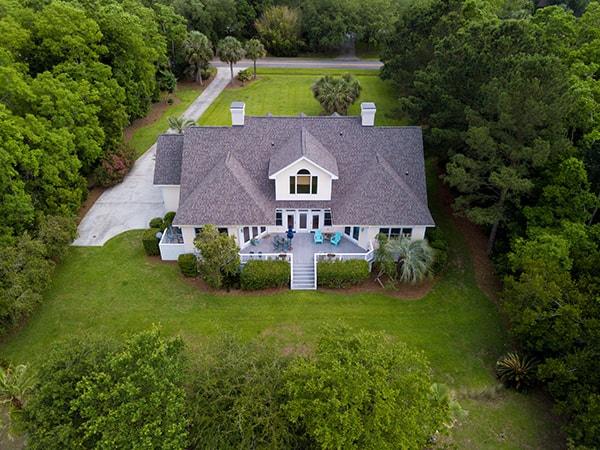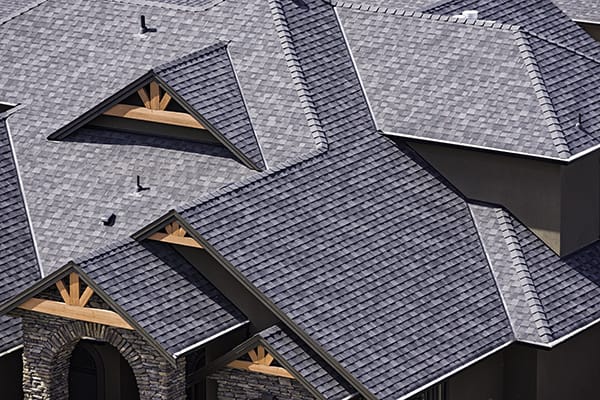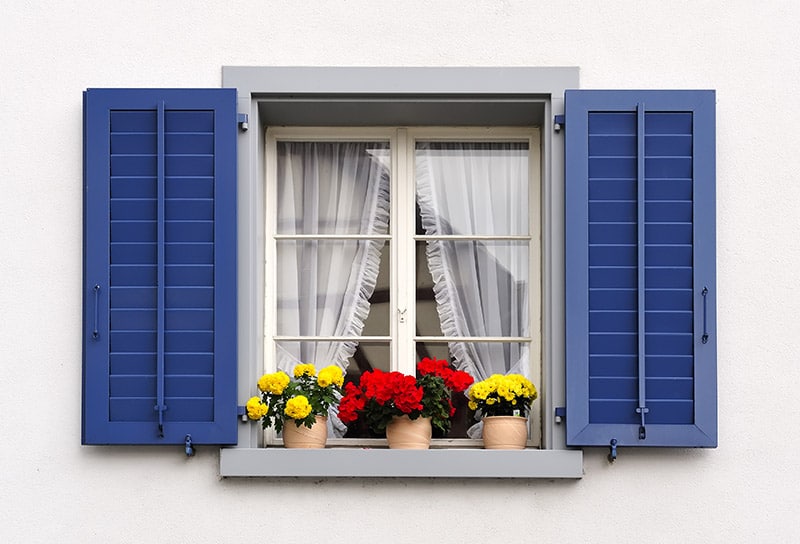The Anatomy of a Roof Explained
Have you ever wondered what’s inside of your roof? If you have a home with an attic, you may be able to get some sense of it by heading up the trapdoor ladder and checking out the exposed beams in the space above your ceilings.

Even so, there are plenty of other parts to the roof that you can’t really see from the inside. Moreover, most newer homes these days will either have a finished attic, or some sort of crawl space that’s not really so conducive to exploration.
Let’s break down the components of your roof so you know what to keep an eye out for in case you need to replace your roof in the future.
The Skeleton: Rafters and Beams
The rafters are sort of like the skeleton of the roof. If you have a triangular roof, the rafters will be positioned like an inverted letter v. Oftentimes they will be held together with a collar beam, making the whole ensemble appear like the letter a.
They can rest on top of a ceiling joist—a sort of beam that runs from wall to wall—or right on the walls of the house itself. If they do rest on the walls directly, a special indentation called a birdsmouth cut will allow them to snugly join the wall.
You may think that the rafters and beams are assembled on top of the house, but this often isn’t the case. Usually they’re assembled on the ground and then hoisted over the house. In fact, these days, they often come as totally prefabricated units assembled in a factory.
Just take a look next time you’re driving down the freeway and you see a large tractor-trailer bearing a flatbed of wooden parts that look like they might be used to throw a home together. You may see some triangular looking ensembles, and those are the prefabricated rafter units.
The Skin: Decking, Felt, and Shingles
Next comes the skin, so to speak, and just like the skin on your body, the “skin” of the roof has several layers. First off, there’s the solid decking, which is basically just strong and solid material that can bear heavy loads (like all the layers on top of it, including shingles).
The solid decking does not have to be made out of wood planks (although it can be), but any kind of durable composite material—even particle board made from wood chips and glue…and this isn’t the flimsy particle board on the back of your dresser.
Particle board made for solid decking is…well, solid. Even a karate black belt with stone fists would have trouble punching through the thick particle board. In fact, it would probably be harder to break through than regular old wood, because the particle board is made from layers of wood chips held together with synthetic glue.
Over the solid decking, felt underlayment is placed. The felt underlayment is a sheet of waterproofing felt, which will then be topped with the shingles. This layer is pretty crucial, because it’s important to keep water out of your home. Water damage can cause warping, rot, mold, and lots of other damage that can spread throughout the structure of the house.
Next the shingles are placed on top of the felt covering. These are flat and rectangular shapes that can be made from a variety of materials, and come in a range of sizes. They could be individual pieces of slate, or strips of granular asphalt. They could be wood, plastic, or even metal. There are other types of roofing materials as well, such as sheets of metal (a popular choice in tropical countries) or solar shingles.
Special Treatment Around the Edges

There may be some features of your roof that require a little special treatment around the edges (literally), such as the chimney and any skylights. The chimney, of course, is that tall structure, usually of brick or masonry, that carries smoke out and away from the interior of our home.
Skylights are essentially windows in the roof that allow natural light to enter the home from above, which can not only be aesthetically pleasing, but save energy as well. These additions to the roof will require flashing where they intersect with the shingles. Flashing is usually a metal material that keeps water out of the cracks.
Speaking of keeping water out of the cracks, if your home is shaped in a way that creates the possibility for multiple roofs to meet and form valleys, you’ll need some valley flashing to keep water from leaking into any possible cracks between the intersection of the two roofs. Like the flashing around chimneys and skylights, this flashing can be made from rubber or felt, but most likely will be made from galvanized metal.
The rafters at the end of the roof, which may have one side exposed to the outside air, are called rakes. Some home exteriors may be totally covered with wood shingles, brick, or masonry, but usually these end rafters will be left exposed, if not painted a pleasing color.
Since the roof extends over the sides of the walls, the space between the lip of the roof and the wall is covered with a panel called a fascia.
Dealing with Rainwater: Gutters and Drains
Lastly, we should mention the system that’s set up to move rainwater and runoff away from the roof. Once water moves down the slope of the roof, it lands in the gutters, a series of canals running along the perimeter of the roof. They can be made from metal or plastic, but either way, you’ll need to clean them out every year (at least) and most likely replace them altogether every 20 years.
The gutter will carry the water to a downspout, which is essentially an enclosed pipe that carries the water down along the wall of the house to a splash block. There the water lands on some sort of stone or plastic material, which directs it away from the foundation of the home. If this last step isn’t done, then water can work its way through the ground toward the foundation, causing serious problems there or within your basement (if applicable).
Interestingly, there are some buildings that lack gutters or downspouts. Buildings in ancient China and Japan had wide roofs that extended way beyond the walls of the structure, and even flipped up at the edges, which essentially did the job of directing water away from the walls.
This type of roof made gutters irrelevant, but most houses will not be built in that kind of style, meaning that gutters become a necessity for making sure potentially damaging rainwater is carried away from the walls of your home.
Gothic cathedrals did not have downspouts, but rather relied on decorative features, like Gargoyles carved out of stone, to “spit” water out of their mouths. Some buildings in Mediterranean countries like Spain might even allow water to runoff the roof into a central courtyard garden, where it could be used to water thirsty plants and trees.
Complete Your Roof with Feldco Roofing
Now that you know all about what goes into the anatomy of a roof, you know what to look for when the time comes for a replacement. If the shingles of your roof look old, worn out or damaged, you need to replace your roof as soon as possible to avoid further damage.
In such a case, Feldco Roofing has you covered with the best roof replacement in the Chicagoland area. Get a free quote now to start your roofing project with us.





